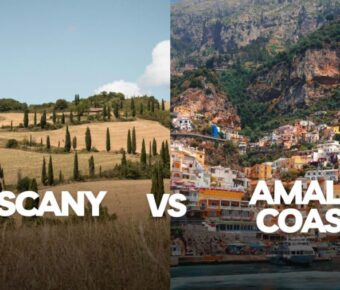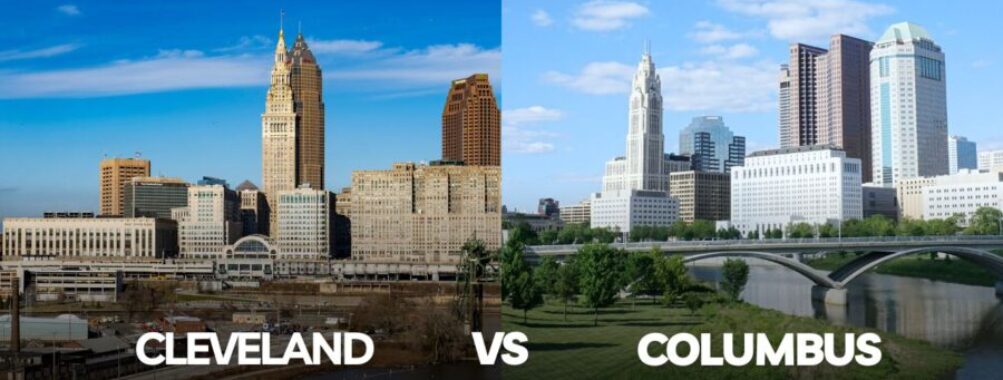
Cleveland vs Columbus: 5 Key Differences Between Ohio’s Major Cities in 2025
Choosing between two of Ohio’s major cities? Cleveland and Columbus each offer unique experiences for visitors and residents alike. While Columbus stands as the state capital and largest city, Cleveland has its distinct charm along the shores of Lake Erie.
Cleveland’s overall cost of living is noticeably lower than Columbus’s, giving it a clear advantage for budget-conscious travelers and residents. Columbus, however, boasts better shopping options, especially on the high-end side, and tends to have a more white-collar, upscale atmosphere that appeals to foodies and hipsters.
Sports enthusiasts might prefer Cleveland’s stronger professional sports scene, while Columbus offers a younger population and a different cultural vibe. Both cities have merits, but they cater to various preferences and lifestyles, making your choice dependent on what matters most during your Ohio adventures.
Table of Contents
- Historical Overview and Growth
- Formation and Annexation
- Key Historical Events
- Demographic and Geographical Comparison
- Population Analysis
- Geographic Landscape
- Economic Perspectives
- Industry and Employment
- Cost of Living
- Cultural Highlights and Lifestyle
- Arts and Museums
- Entertainment and Recreation
- Educational Opportunities
- University Comparison
- Research Institutions
- Safety and Living Standards
- Crime Rates Comparison
- Health and Well-Being
- Frequently Asked Questions
- How do the amenities and attractions in Cleveland compare to those in Columbus?
- What are the pros and cons of the airports in Cleveland and Columbus for travelers?
- How do Cleveland and Columbus stack up against each other regarding live entertainment and sports?
- Book Your Dream Experience
- More Travel Guides
Historical Overview and Growth

Cleveland and Columbus have followed different growth trajectories shaped by their industrial bases, geographic constraints, and policy decisions over time. Cleveland rose as an early industrial powerhouse while Columbus gradually became a government and education center.
Formation and Annexation
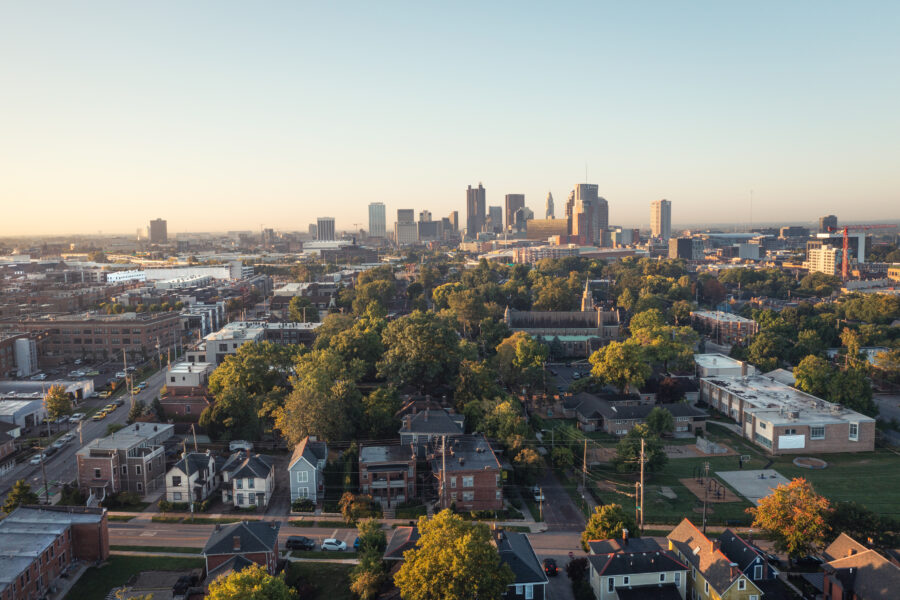
Cleveland was established in 1796 along Lake Erie at the mouth of the Cuyahoga River. This strategic location helped it become a transportation hub connecting the Great Lakes to the canal systems. The city experienced rapid growth during the Industrial Revolution, becoming a manufacturing powerhouse by the late 19th century.
Columbus, founded in 1812, was deliberately created to serve as Ohio’s capital. The city’s growth pattern differed significantly from Cleveland’s approach.
While Cleveland became hemmed in by independent suburbs, Columbus pursued an aggressive annexation policy that continued through the 20th century. This allowed Columbus to expand its city limits dramatically.
Columbus’s ability to annex surrounding areas has been a major factor in its success. Unlike Cleveland, Columbus wasn’t “constrained by suburbs,” giving it room to grow physically and capture population growth within its official boundaries.
Key Historical Events

Cleveland’s boom period came earlier than Columbus’s. By the early 20th century, Cleveland had become the fifth-largest city in America, home to industrial giants and wealthy entrepreneurs like John D. Rockefeller. The city’s economy centered on manufacturing, particularly steel and auto-related industries.
However, Cleveland experienced significant challenges as manufacturing declined. The search results mention a transition from “Rust to Riches,” highlighting how Cleveland’s heavy dependence on manufacturing (dropping to 11.2% of employment) contributed to its economic struggles when those industries contracted.
Columbus followed a different path, building its economy around government, education, and services rather than heavy industry. As noted in the search results, the city’s growth accelerated after the development of the interstate highway system. Columbus weathered economic shifts better than Cleveland, with Ohio State University and the state government providing stable employment.
Columbus’s manufacturing share fell to just 6.4%, reflecting its more diversified economy, which proved more resilient to industrial changes.
Demographic and Geographical Comparison

When compared, the population sizes and geographical layouts of Cleveland and Columbus reveal significant differences that affect the living experiences of these two major Ohio cities.
Population Analysis

Columbus has significantly outpaced Cleveland in population growth over recent years. With approximately 905,000 residents, Columbus is much larger than Cleveland’s population of about 389,521. This represents a dramatic difference – Columbus has roughly 146% more people than Cleveland!
The population trends tell an interesting story, too. While Columbus has grown by about 195,058 people (27.4%) since 2000, Cleveland has experienced the opposite trend, losing around 110,412 residents during the same period.
Columbus continues to expand, attracting new residents with its university presence and growing job market. Cleveland, once the larger city, has faced challenges with population retention, though it maintains a rich cultural identity despite the smaller numbers.
Geographic Landscape

The physical size difference between these cities is striking. Columbus covers nearly triple the land area of Cleveland! This expansion allows Columbus to spread out with newer developments reaching as far as Madison County while still being considered the “City of Columbus.”
Cleveland is much more densely populated, at about 5,013 people per square mile, compared to Columbus’s 3,849 people per square mile. This density creates distinctive urban environments in each city.
Cleveland’s geography benefits from its position on Lake Erie, providing beautiful waterfront areas and natural boundaries. Being more inland, Columbus has expanded outward in multiple directions without significant geographical limitations.
Both cities feature unique neighborhood layouts. Cleveland’s older, established districts contrast with Columbus’s mix of historic areas and newer, planned communities that continue to develop as the city grows.
See Related: Breathtaking Stargazing Destinations for an Unforgettable Night Under the Stars
Economic Perspectives
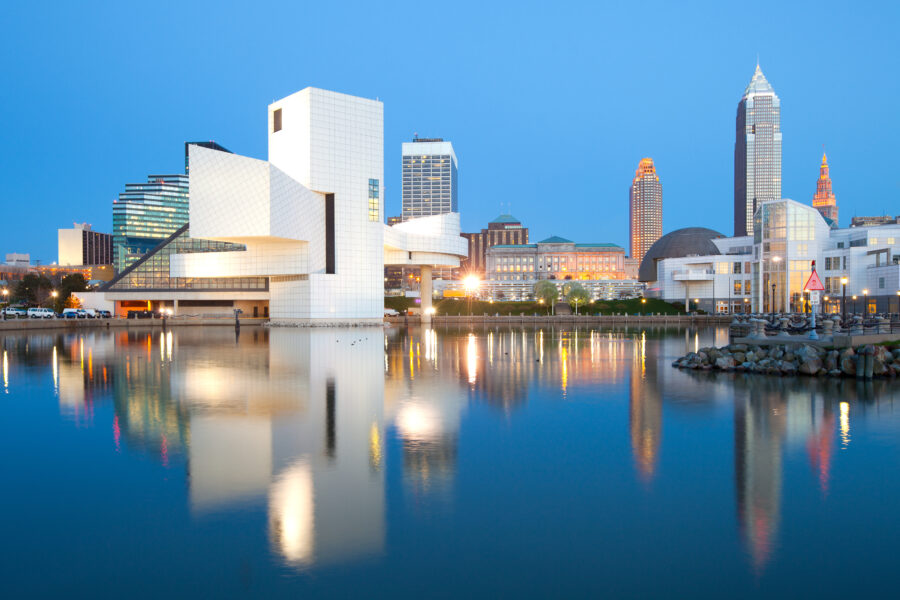
Cleveland and Columbus present two distinct economic pictures within Ohio. The cities have followed different economic paths over the past decade, with Columbus showing stronger growth while Cleveland offers certain cost advantages.
Industry and Employment
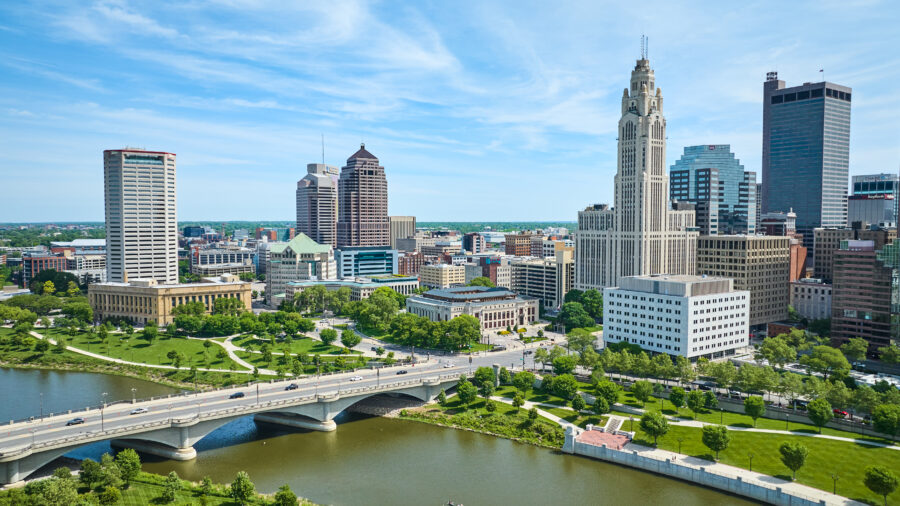
Columbus has emerged as an economic powerhouse in Ohio with a substantially lower unemployment rate of 5.7%. The capital city has diversified its economy with strong government, education, healthcare, and technology sectors. Many major corporations have headquarters or significant operations there, creating a robust job market.
Cleveland’s job market has faced more challenges in recent years. Once, economic equals a decade ago, Cleveland has fallen into Columbus’ shadow, according to search results. The city has been working to transform its traditionally manufacturing-based economy toward healthcare, biomedical, and service industries.
The household income disparity is striking – Cleveland’s median household income is 43% less than Columbus’s and sits 105% below the national average. This significant gap impacts quality of life and economic opportunity.
Cost of Living

Despite Columbus’s stronger job market, Cleveland offers notable cost advantages for residents. Housing costs in particular show clear differences between the two cities. The median rent for a two-bedroom apartment in Cleveland is approximately $1,000, while Columbus rentals run about $1,200 – a 20% premium.
Overall, living expenses follow a similar pattern. Several search results indicate that Columbus has a higher cost of living than Cleveland and other Northeast Ohio cities. This creates an interesting trade-off for residents considering relocation.
For budget-conscious individuals, Cleveland’s lower housing costs might offset Columbus’ employment advantages. However, those seeking career advancement and economic opportunity may find Columbus’ higher costs worthwhile for the expanded job prospects and higher potential earnings.
Cultural Highlights and Lifestyle

Both Cleveland and Columbus offer unique cultural experiences that shape the lifestyle of their residents. Cleveland boasts established cultural institutions, while Columbus features a more emerging and youthful scene.
Arts and Museums

Cleveland’s cultural crown jewel is University Circle, home to world-class institutions like the Cleveland Museum of Art, which offers free general admission to its impressive collection. The Cleveland Orchestra, consistently ranked among the world’s best, performs at Severance Hall. The Rock & Roll Hall of Fame, with its iconic I.M. Pei-designed building on the lakefront, draws music lovers from around the globe.
Columbus has its cultural strengths, with the Columbus Museum of Art growing significantly in recent years. The Wexner Center for the Arts at Ohio State University is a laboratory for contemporary art and exhibitions.
The Short North Arts District in Columbus is filled with galleries and monthly Gallery Hop events that attract crowds interested in the local art scene. It’s become the artistic heart of the city.
Entertainment and Recreation

Cleveland’s lakefront location benefits its entertainment scene. The Metroparks system offers beautiful outdoor spaces, including Edgewater Park’s beach and skyline views. The Flats Entertainment District along the Cuyahoga River has experienced revitalization with restaurants and nightlife.
Playhouse Square in Cleveland is the second-largest performing arts center in the country after New York’s Lincoln Center. It hosts Broadway shows, concerts, and various performances throughout the year.
Columbus offers the sprawling Franklin Park Conservatory, Botanical Gardens, and the massive Columbus Zoo and Aquarium, which are considered among the nation’s best. The city’s COSI (Center of Science and Industry) provides interactive exhibits for all ages.
The Arena District in Columbus houses Nationwide Arena and various entertainment venues. The district comes alive during Blue Jackets hockey games and concerts.
See Related: Most Breathtaking Places to Visit in the World (Travel Guide)
Educational Opportunities
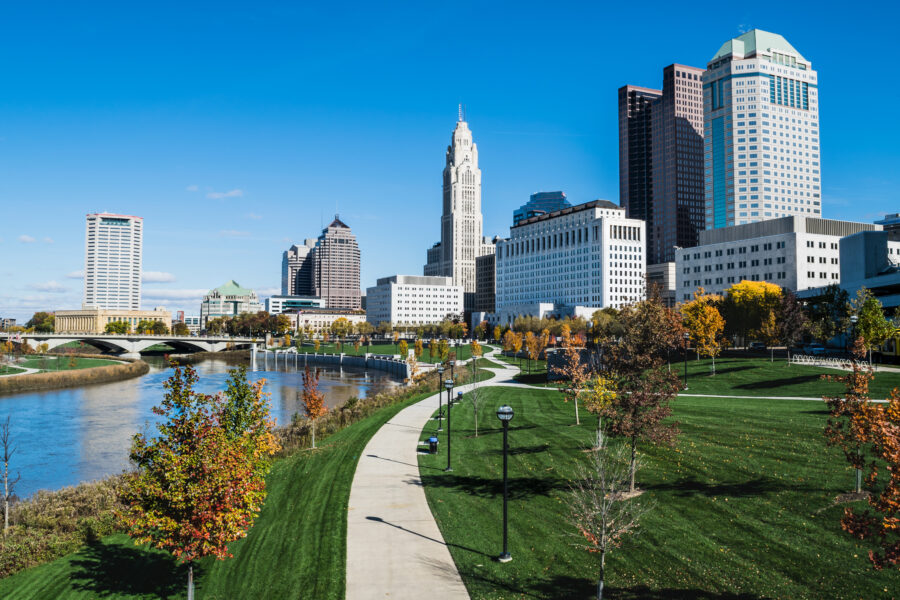
Both Cleveland and Columbus offer strong educational options, but with different strengths and focus areas. The academic landscape in these Ohio cities reflects their unique characters and economic priorities.
University Comparison
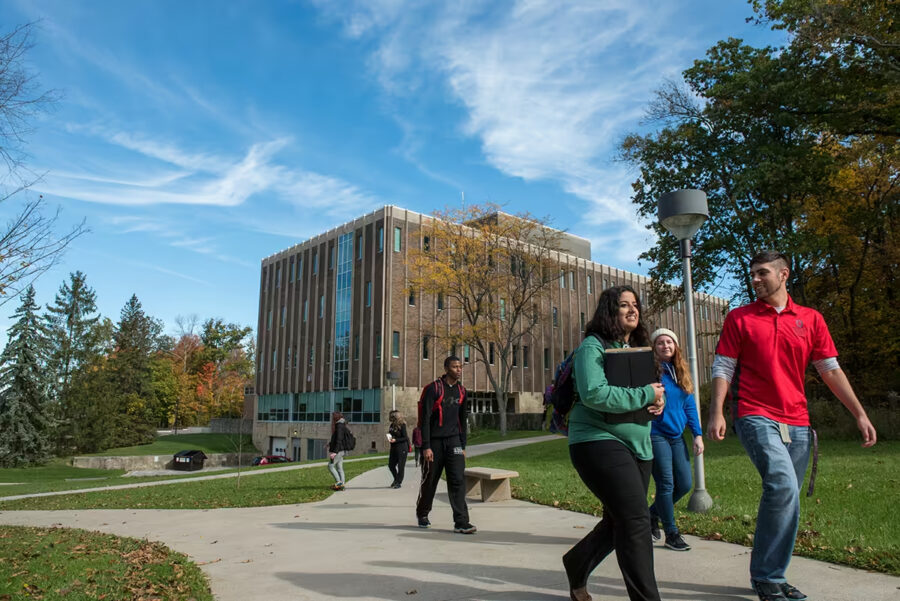
Cleveland boasts Case Western Reserve University in the heart of University Circle, a cultural and educational hub. This prestigious private research university excels in medicine, engineering, and business programs. Cleveland State University provides affordable options with strong urban planning and education departments.
Columbus, meanwhile, is dominated by The Ohio State University, one of America’s largest public universities with over 60,000 students. OSU offers hundreds of degree programs and has strong business, engineering, and healthcare curricula. Columbus also hosts Capital University, Franklin University, and Ohio Dominican – giving students diverse educational choices.
Cleveland’s institutions tend to be more specialized and research-focused, while Columbus offers broader educational opportunities. The student experience differs, too – Cleveland provides a more traditional urban campus feel, while Columbus has a vibrant college-town atmosphere thanks to OSU’s massive presence.
Research Institutions

Cleveland shines in medical and healthcare research through the Cleveland Clinic, University Hospitals, and the research departments at Case Western. University Circle is the research community’s epicenter, with institutions collaborating on cutting-edge medical innovations and treatments.
Columbus’s research strength comes primarily from OSU’s massive research infrastructure. The university receives millions in research funding annually and focuses on cancer research, advanced materials, and agricultural science. The Battelle Memorial Institute, headquartered in Columbus, is one of the world’s largest private research organizations.
Both cities benefit economically from their research institutions. Cleveland’s medical corridor creates thousands of healthcare and biotech jobs.
Columbus leverages OSU’s research to fuel its growing tech and innovation sectors. The cities differ in research specialization—Cleveland dominates healthcare, while Columbus covers more diverse fields, including technology, education, and government research.
Safety and Living Standards

When comparing Cleveland and Columbus, safety concerns and quality of life factors often top the list for potential residents and visitors. Both cities offer distinct experiences regarding public safety and living conditions, with notable differences in crime statistics and healthcare options.
Crime Rates Comparison
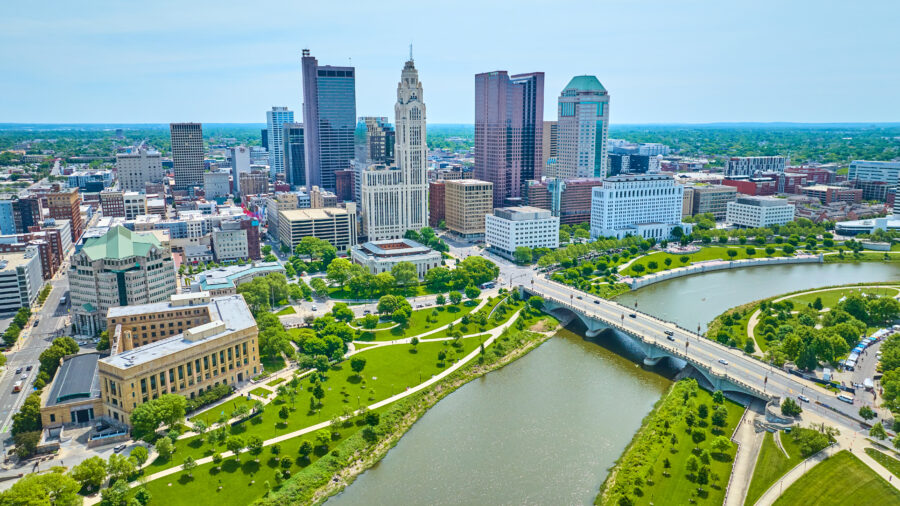
Columbus generally edges out Cleveland when it comes to overall safety metrics. According to recent comparisons, Columbus has a lower total crime rate than Cleveland, making it statistically safer. When walking alone during daylight hours, Columbus scores higher (68.43) in safety ratings than Cleveland’s moderate rating (57.07).
Nighttime safety follows a similar pattern. Columbus maintains a moderate safety rating for walking after dark, while Cleveland scores lower in this category.
The safety index confirms this trend, with Columbus achieving a moderate 50.35 rating compared to Cleveland’s lower 36.59. However, it’s worth noting that, like most major cities, both have areas with varying safety profiles.
Health and Well-Being

Interestingly, Cleveland outperforms Columbus in healthcare metrics despite trailing in safety ratings. Cleveland boasts a high healthcare index of 78.49, slightly better than Columbus’s still-impressive 70.66 rating.
Both cities offer excellent medical facilities and healthcare options for residents. Cleveland is particularly known for its world-class medical institutions, including the Cleveland Clinic, which attracts patients worldwide.
The comparison of the overall quality of life reflects the cities’ different characteristics. Columbus tends to offer more white-collar job opportunities with higher average pay, while Cleveland maintains its blue-collar roots and unique cultural identity that many residents deeply value.
Cost of living considerations also factor into the health and well-being equation, with cities offering relatively affordable living compared to coastal metropolitan areas.
See Related: Most Affordable Summer Destinations
Frequently Asked Questions

How do the amenities and attractions in Cleveland compare to those in Columbus?
Cleveland boasts significant cultural institutions like the Rock & Roll Hall of Fame, the Cleveland Museum of Art, and access to Lake Erie. The lakefront offers unique recreational opportunities not available in Columbus.
Columbus features the massive Ohio State University campus, the COSI science center, and a recently developed downtown area. The city has invested heavily in parks and green spaces.
The search results suggest Cleveland has “more culture” and “more to do,” while Columbus is described as a “more master planned city.”
What are the pros and cons of the airports in Cleveland and Columbus for travelers?
Cleveland Hopkins International Airport (CLE) offers more flight options and international destinations than Columbus. However, travelers sometimes criticize it for dated amenities because it’s an older facility.
John Glenn Columbus International Airport (CMH) is more modern and often praised for its efficiency and ease of use. It has fewer total flights but has been adding more direct destinations.
Both airports are relatively accessible from their respective downtowns, though Columbus travelers often cite shorter security lines and easier parking.
How do Cleveland and Columbus stack up against each other regarding live entertainment and sports?
Cleveland has three major professional sports teams: the Browns (NFL), Cavaliers (NBA), and Guardians (MLB). Passionate fans have created a deep-rooted sports culture in the city.
Columbus has the Blue Jackets (NHL), the Crew (MLS), and Ohio State University athletics, which dominate the sports scene. College football game days transform the city during the season.
Cleveland’s theater district is more established for entertainment beyond sports, while Columbus has a growing arts scene centered around the Short North district and numerous music venues.


